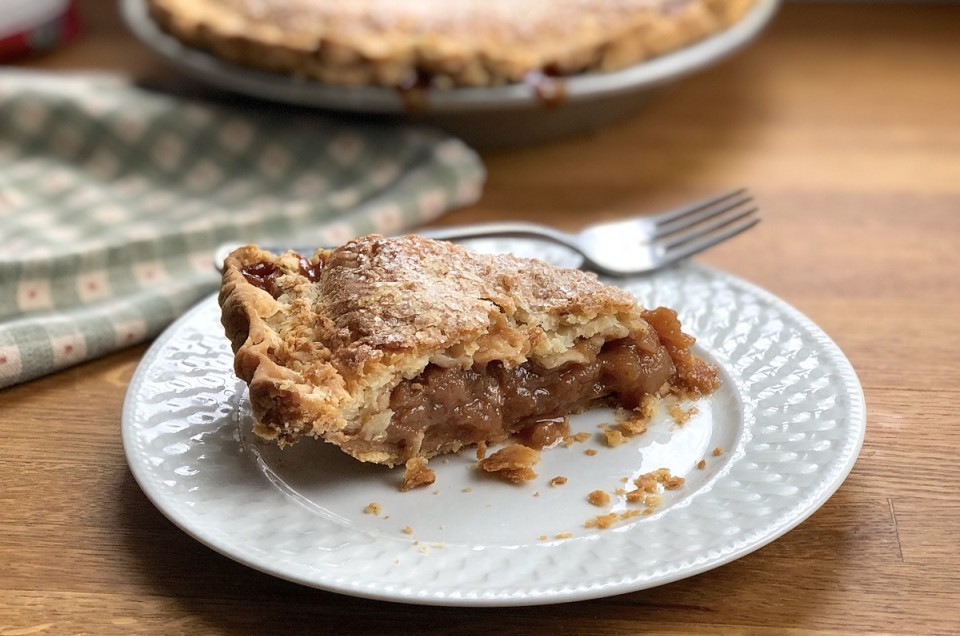


What’s your baking passion? You know, the one particular type of baking you gravitate to over and over again? Maybe it’s sourdough bread. Or perhaps you’re a pastry devotée focused on nailing the best buttercream ever. Even if your ultimate goal is simply one perfect biscuit, it’s an example of the power baking has to engage both heart and mind.
My baking passion happens to be pie crust. For years I’ve been tinkering with different ingredients and techniques for a crust that’s both flaky and flavorful — and whose preparation doesn’t drive me insane.
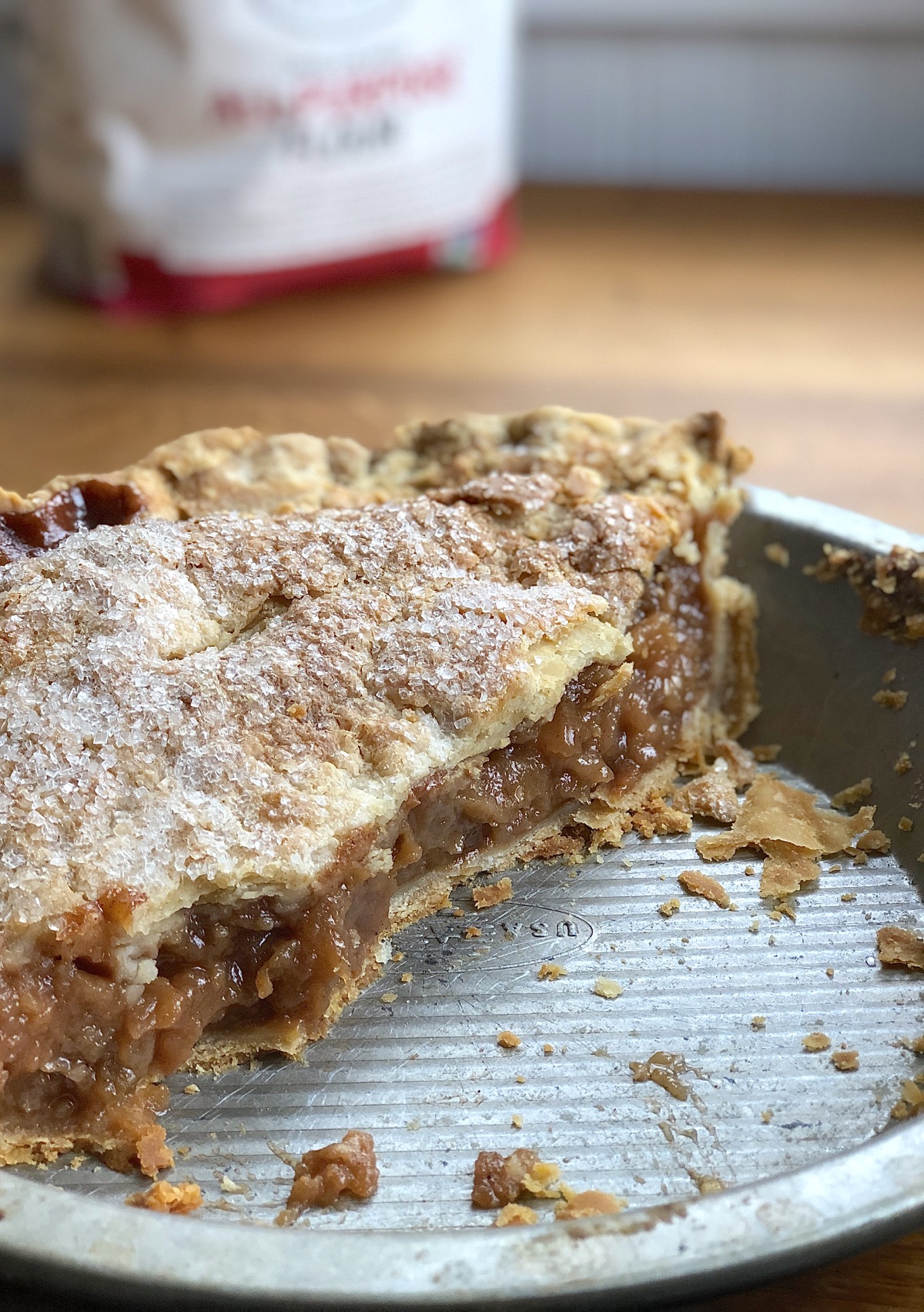
At this point I have a fallback recipe and method, a process that safely makes a decently flaky/buttery crust. But I’m always open to new ideas — like a Bon Appetit test kitchen technique I recently caught on video.
The particular method of preparing pie crust offered by Bon Appetit starts with large “pats” (really, chunks) of butter that are tossed with flour then dumped onto a table and rolled into thin sheets. The mixture is combined with water and folded on itself several times before ultimately being shaped into discs, chilled, and then rolled into crust.
Butter gives pie crust its flavor (of course), but it plays a major role in its texture as well. When the butter in a rolled-out crust hits the oven’s heat it melts, giving off a burst of steam. That steam puffs up the vacant area left by the solid butter (now melted), and the result is empty space surrounded by layers of a flour-and-water matrix: i.e., flakes.
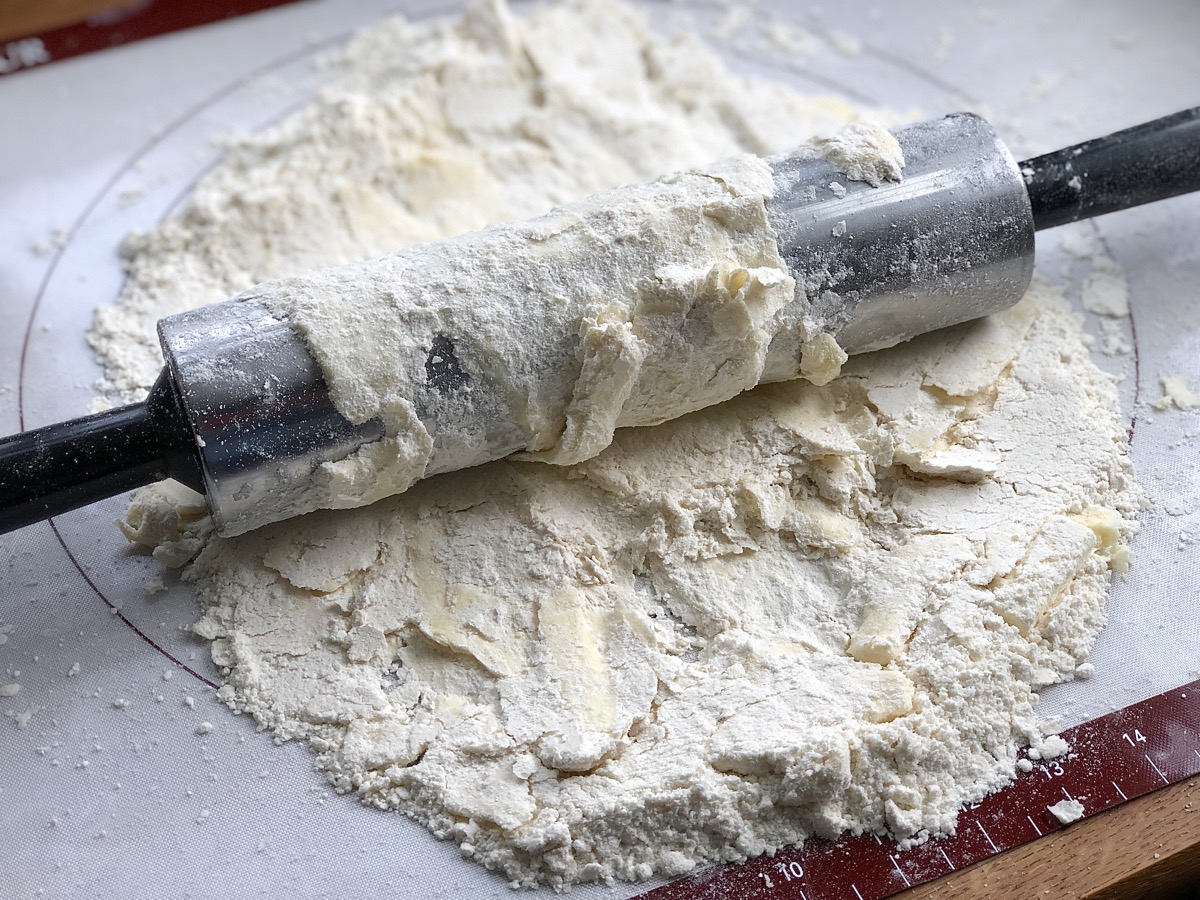
So is Bon Appetit’s toss-and-roll method a great new way to obtain a super-flaky crust? Do larger sheets of butter (compared to the pea-sized chunks you might obtain with a pastry blender or your stand mixer) mean larger, more extensive flakes?
Now, the folks at Bon Appetit aren’t the first to offer up this sheeted butter technique. Pastry chef and author Jim Dodge pioneered something similar way back in the day. Dodge is a long-time King Arthur Flour friend; I first met him when he and Julia Child, among others, judged one of our baking competitions. I’d had his flaky pastry technique in the back of my mind for years, and Bon Appetit’s video was the impetus I needed to finally give it a try.
I won’t bore you with all the details, but suffice it to say I now have 10 pie crusts in my fridge ready to roll. Why so many? Process of elimination.
I needed to go down several pastry paths before I found the one leading to my favorite destination: super-flaky crust with a modicum of mess.
First, unlike the crew in the Bon Appetit test kitchen (but probably like many of you out there), I don’t have a huge work surface on which to roll out crust. I have to keep my flour and fat contained or suffer the consequences: flour on the floor, bits of dough under the mixer, and smears of fat on various nearby surfaces (table edge, doorknob — you name it).
How about if I roll fat with flour in a jumbo zip-top bag?
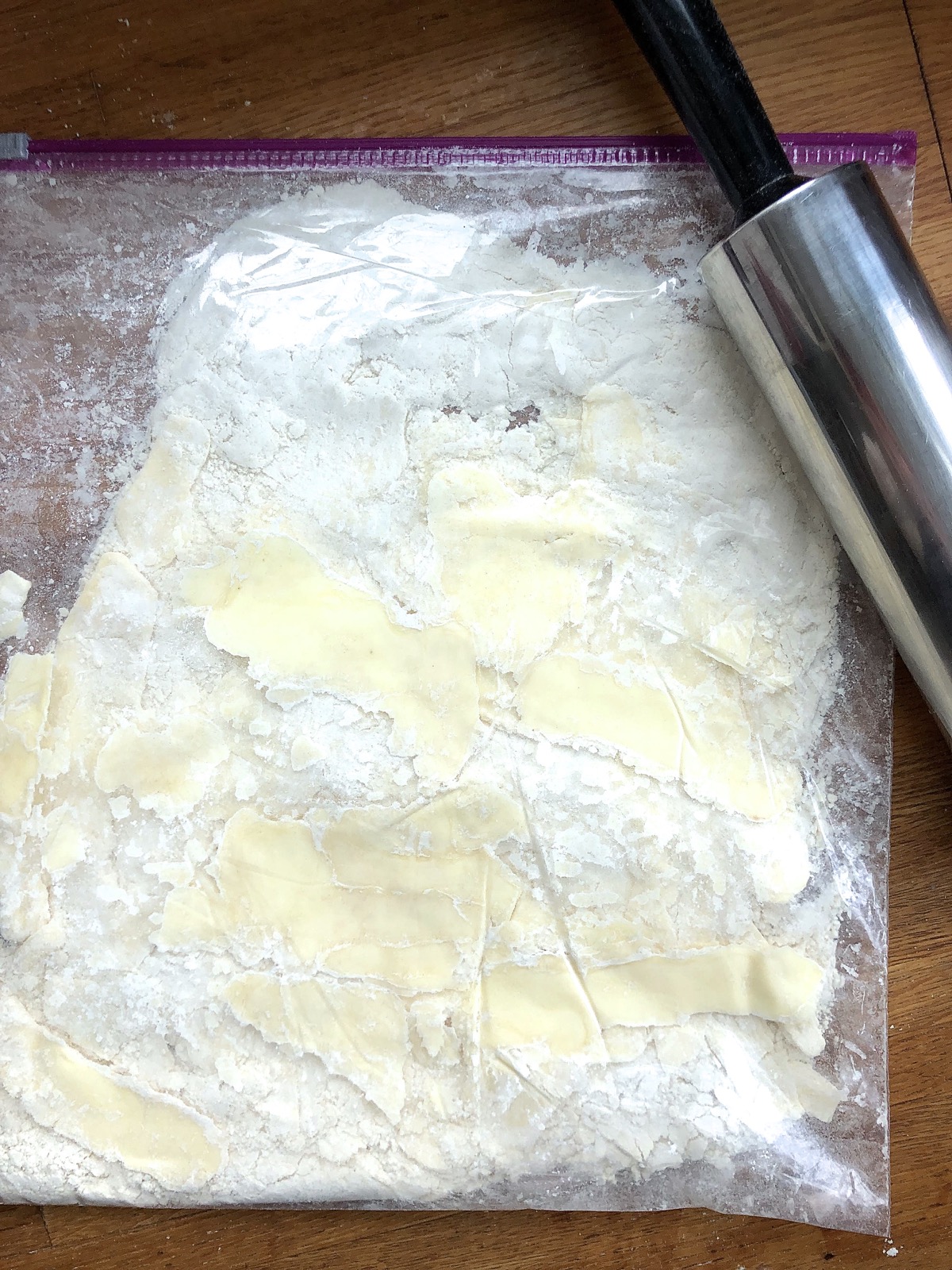
Strike one. The butter sticks to the inside of the bag like rubber cement. I finally have to cut the bag apart and scrape it off with a bench knife, by which time it’s soft and smeary rather than cold and crisp; not good.
How about if I use parchment?
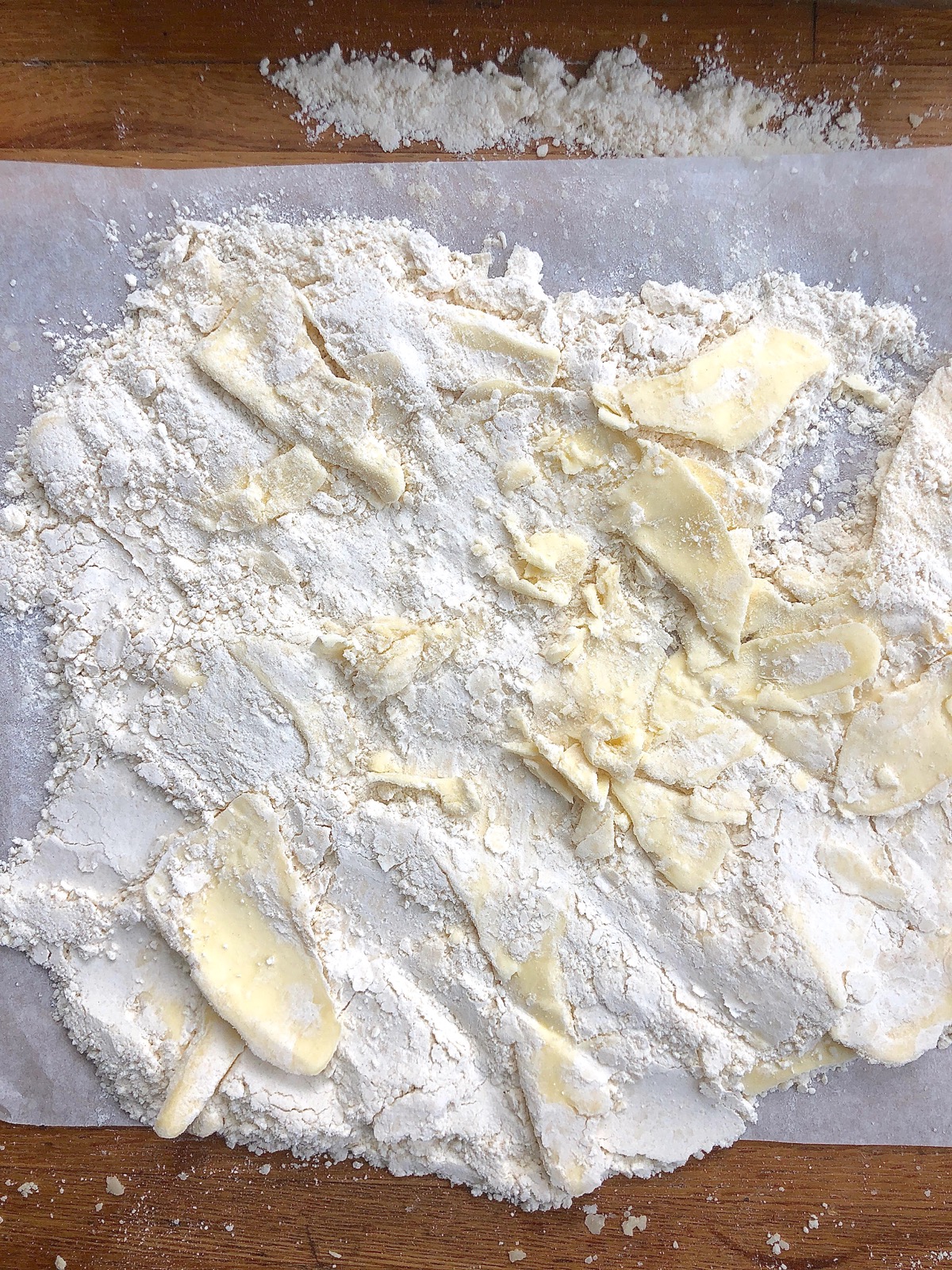
Strike two. The parchment isn’t large enough to contain everything. Those selfsame bits of dough and showers of flour leak out around the paper’s edges and thence to the tabletop, my jeans, and onto the dog’s bed.
Which leaves me looking at strike three — unless I figure out a way to contain the mess.
Like a bowl, duh.
Let me backtrack. The recipe I use, Classic Double Pie Crust, calls for both shortening and butter, with the shortening being thoroughly worked into the flour before the butter is added in pats.
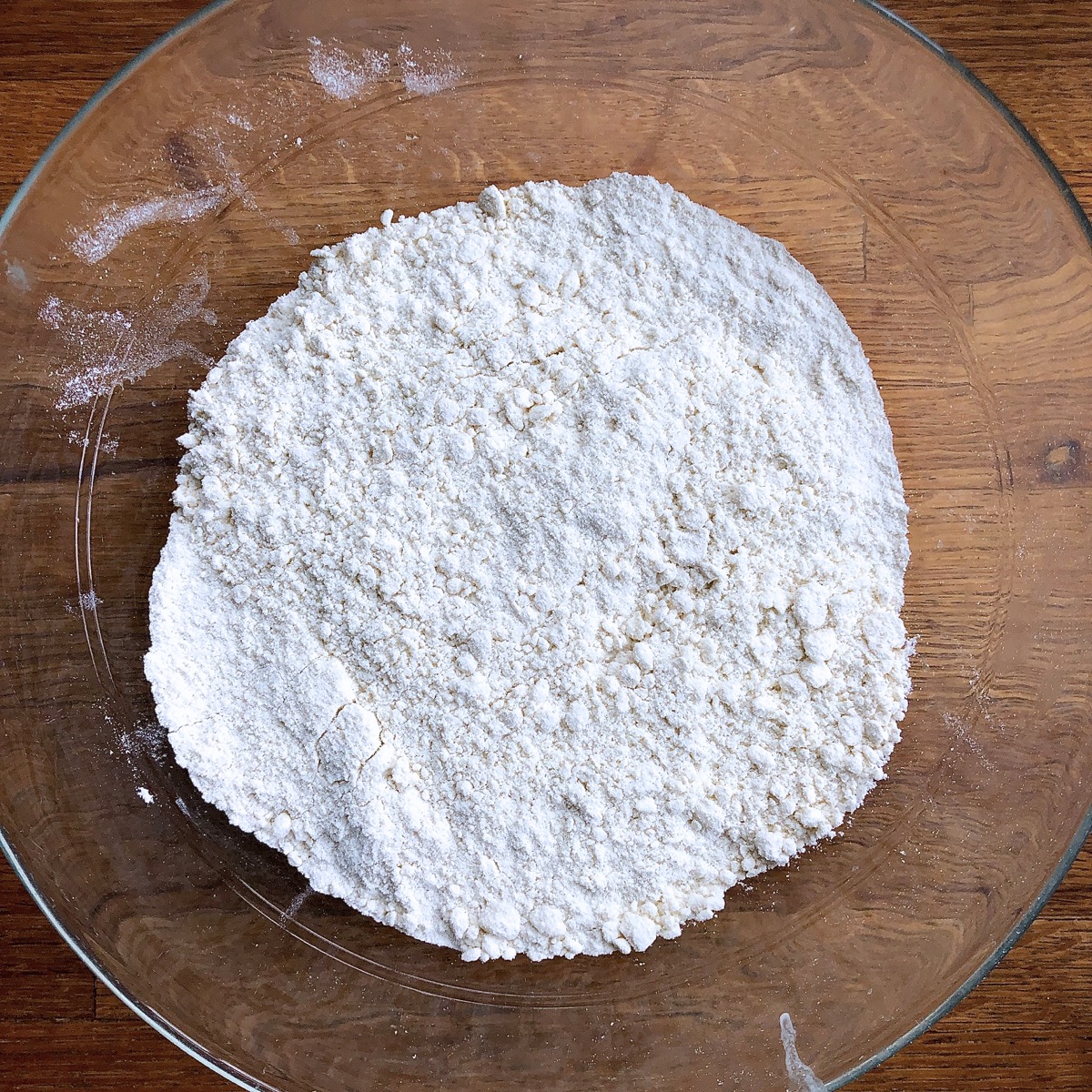
So I start by combining flour, salt, and shortening in my stand mixer until sandy textured; then I dump that mixture into a wide, shallow bowl.
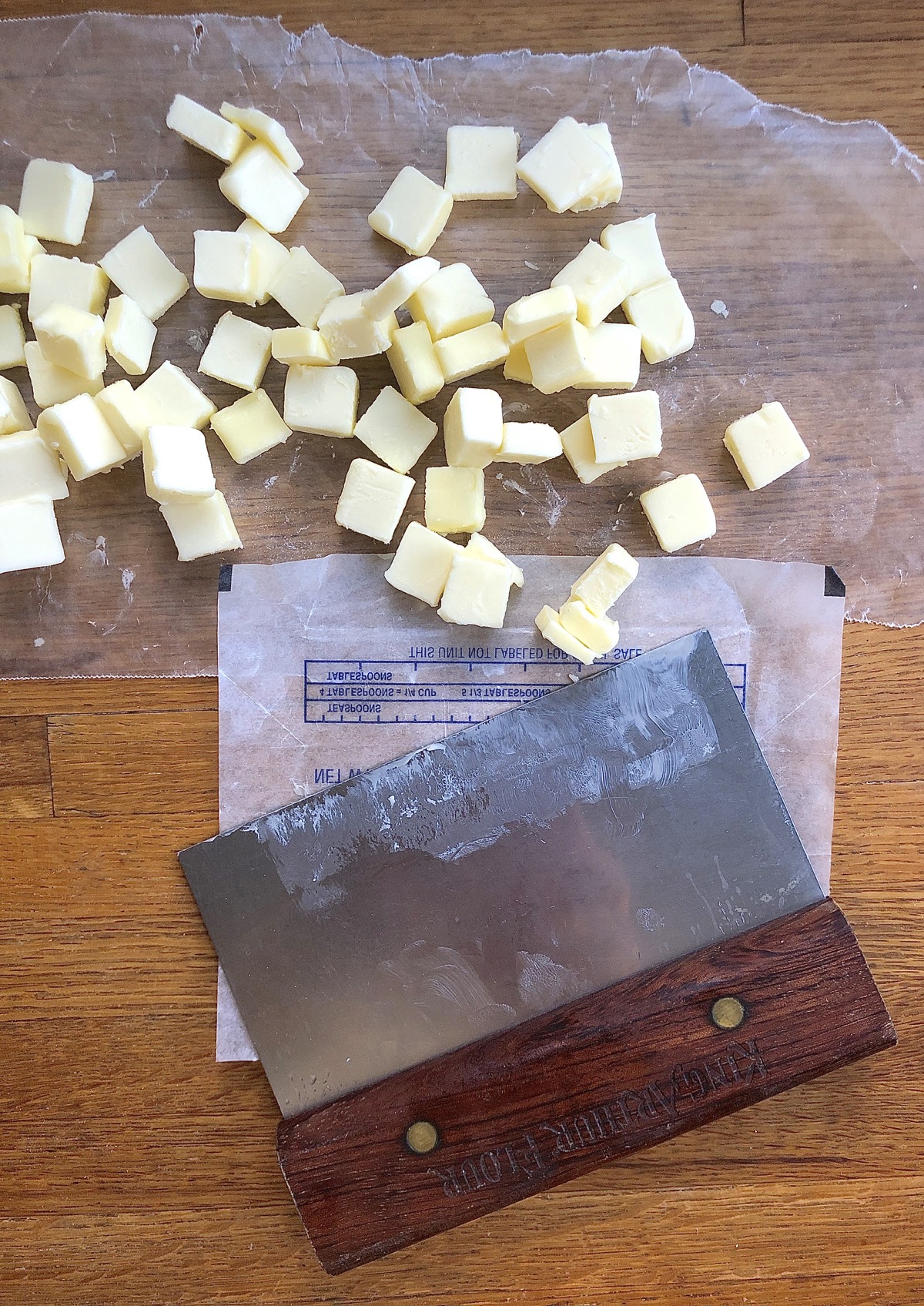
Next, I cut up the cold butter: not in large chunks or thin pats, but in 1/2” cubes. Why? I feel that more, smaller bits of flattened butter — sheetlets, we’ll call them — might provide better “flake” than larger pieces. But I don’t want to cut the butter into thin pats initially, believing those pats will simply crumble apart during the mixing process.
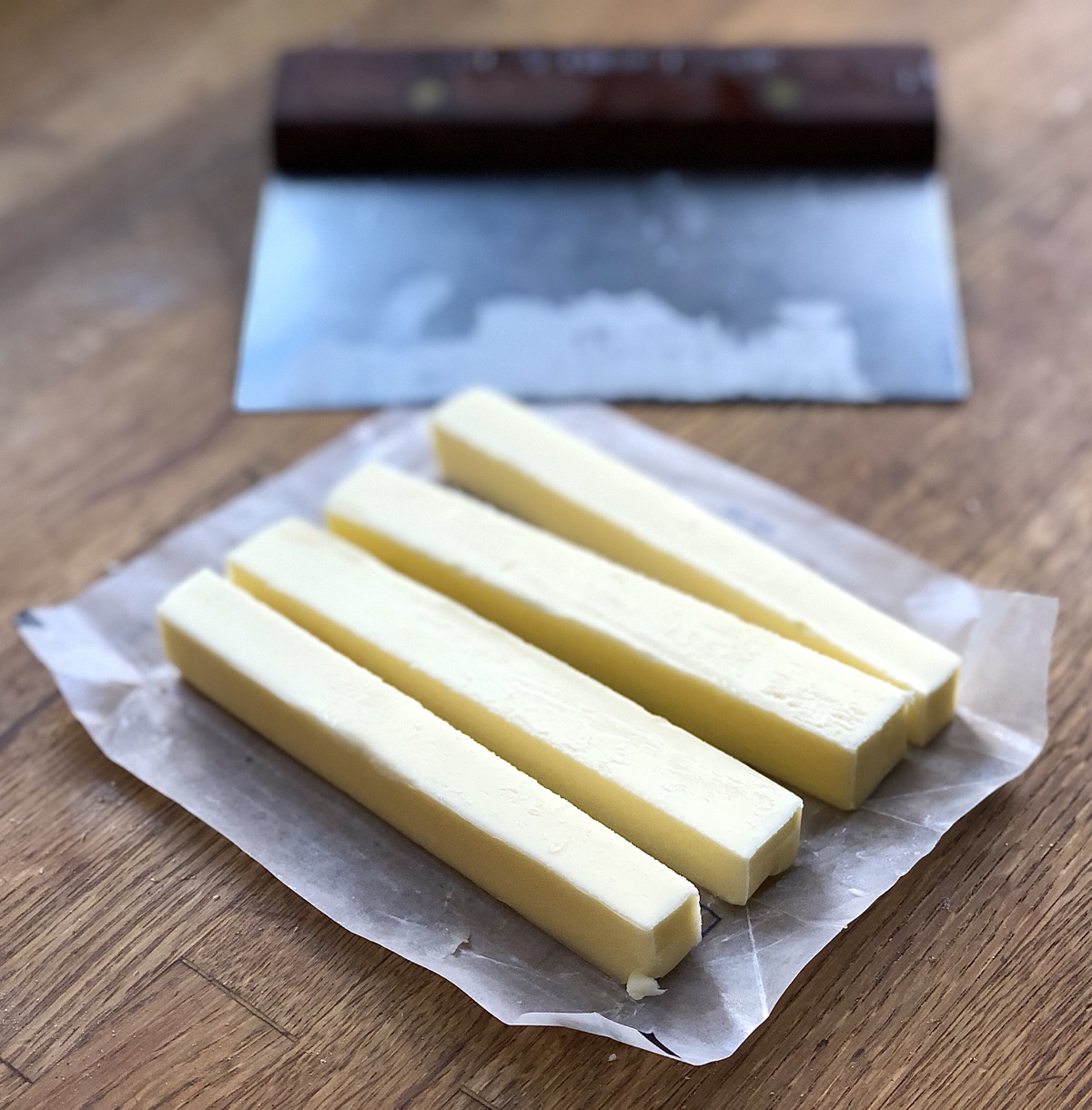
Thus the cubes, obtained by cutting 10 tablespoons of butter (one stick + 2 tablespoons) lengthwise into four long strips, then stacking and cutting those strips into 1/2” cubes. I actually follow the markings on the butter paper, cutting 16 slices (to yield 64 cubes).
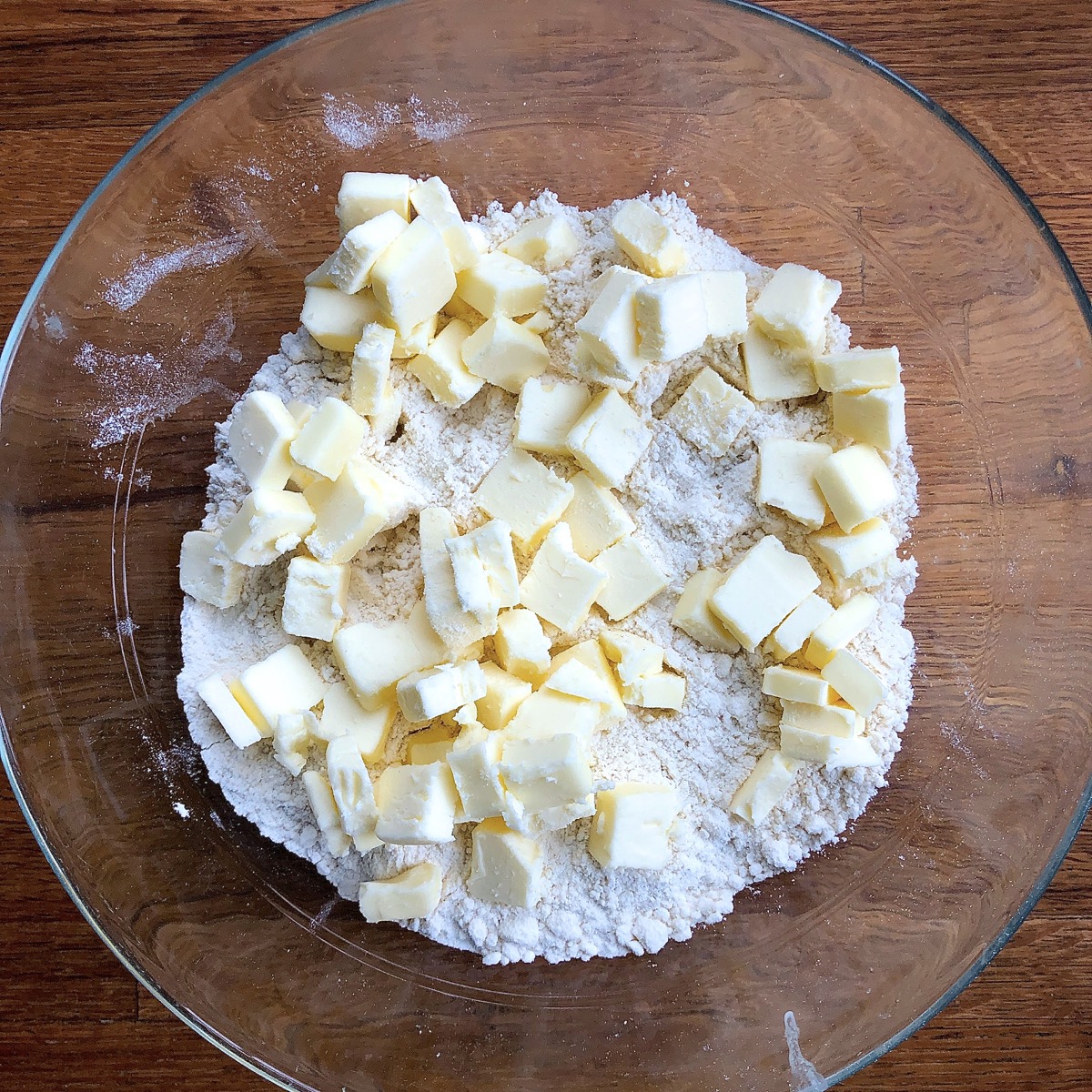
I dump the butter cubes onto the flour/shortening mixture in the bowl, then toss very lightly, just to combine.
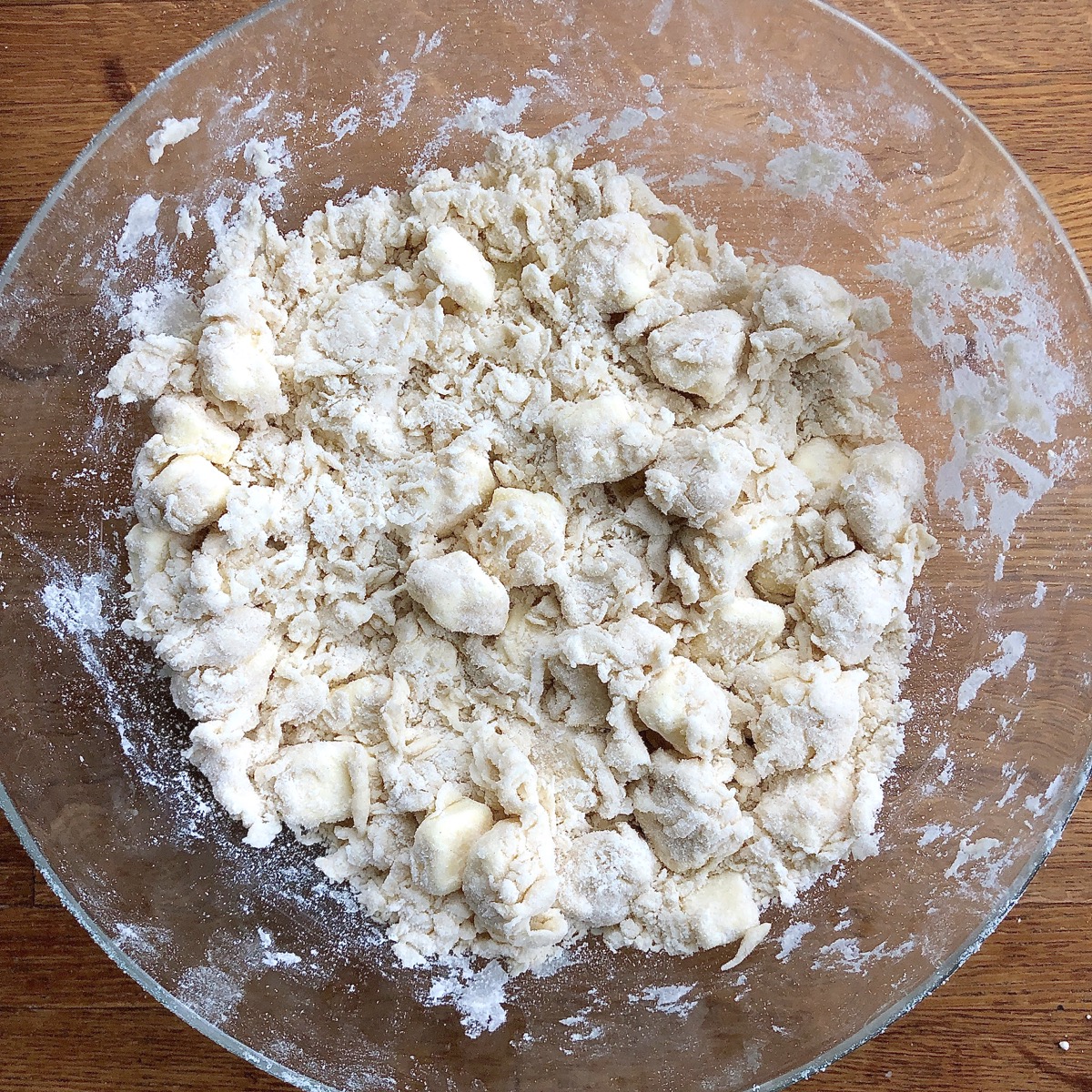
Then I use one hand to drizzle in 8 tablespoons of ice water from a cup, using the other hand to toss the mixture and distribute the water.
Eventually I can squeeze everything into a solid mass — kind of. It’s still quite dry. But that’s good; the less water in pie crust, the more tender it’ll be.
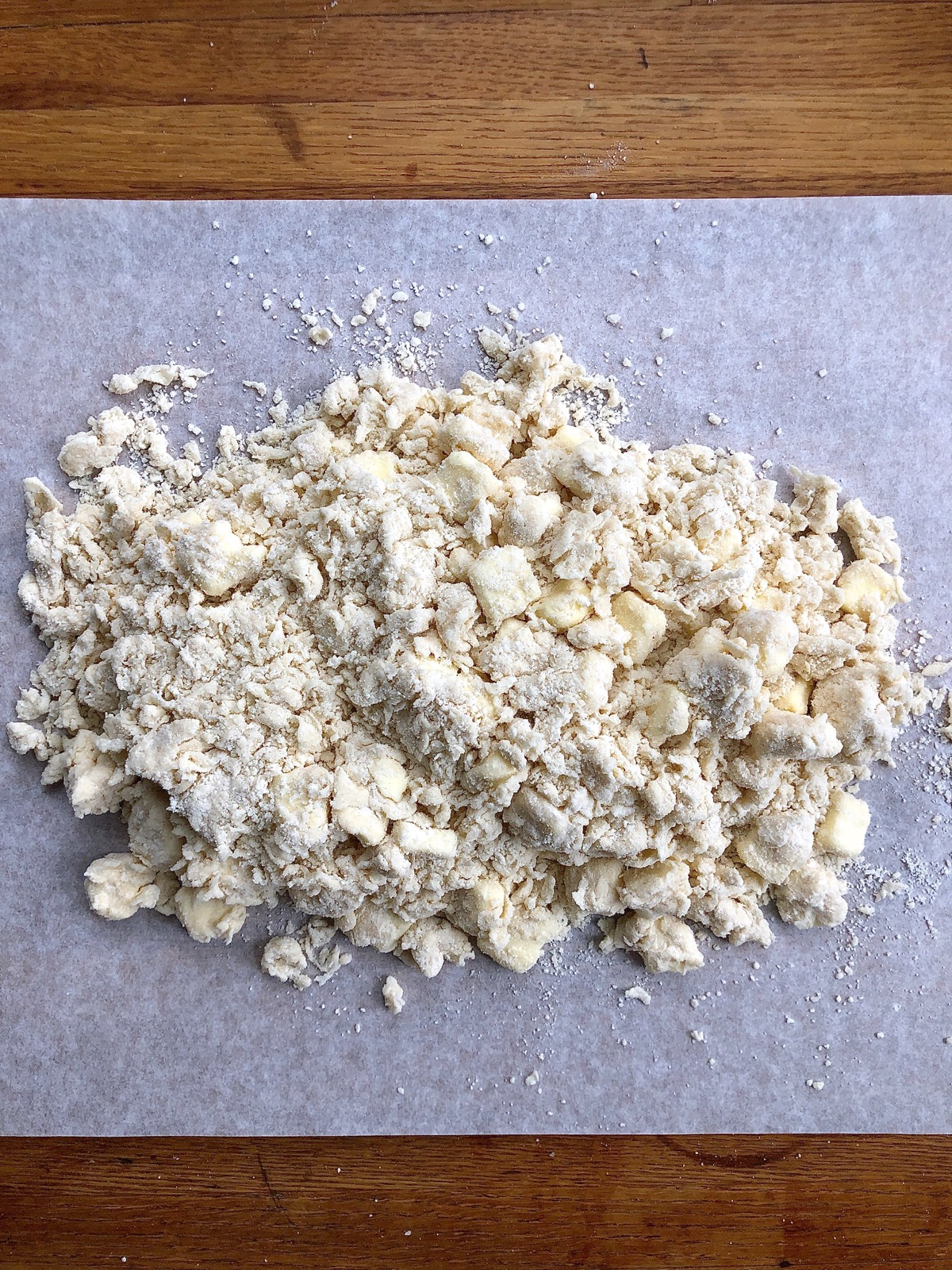
Dry or not, though, it’s cohesive enough to move to a sheet of parchment without too much flour flying around.
Here comes the folding part. Why fold? Same reason you fold puff pastry: you’re adding layers to the dough’s innate flakiness, making your finished crust even flakier.
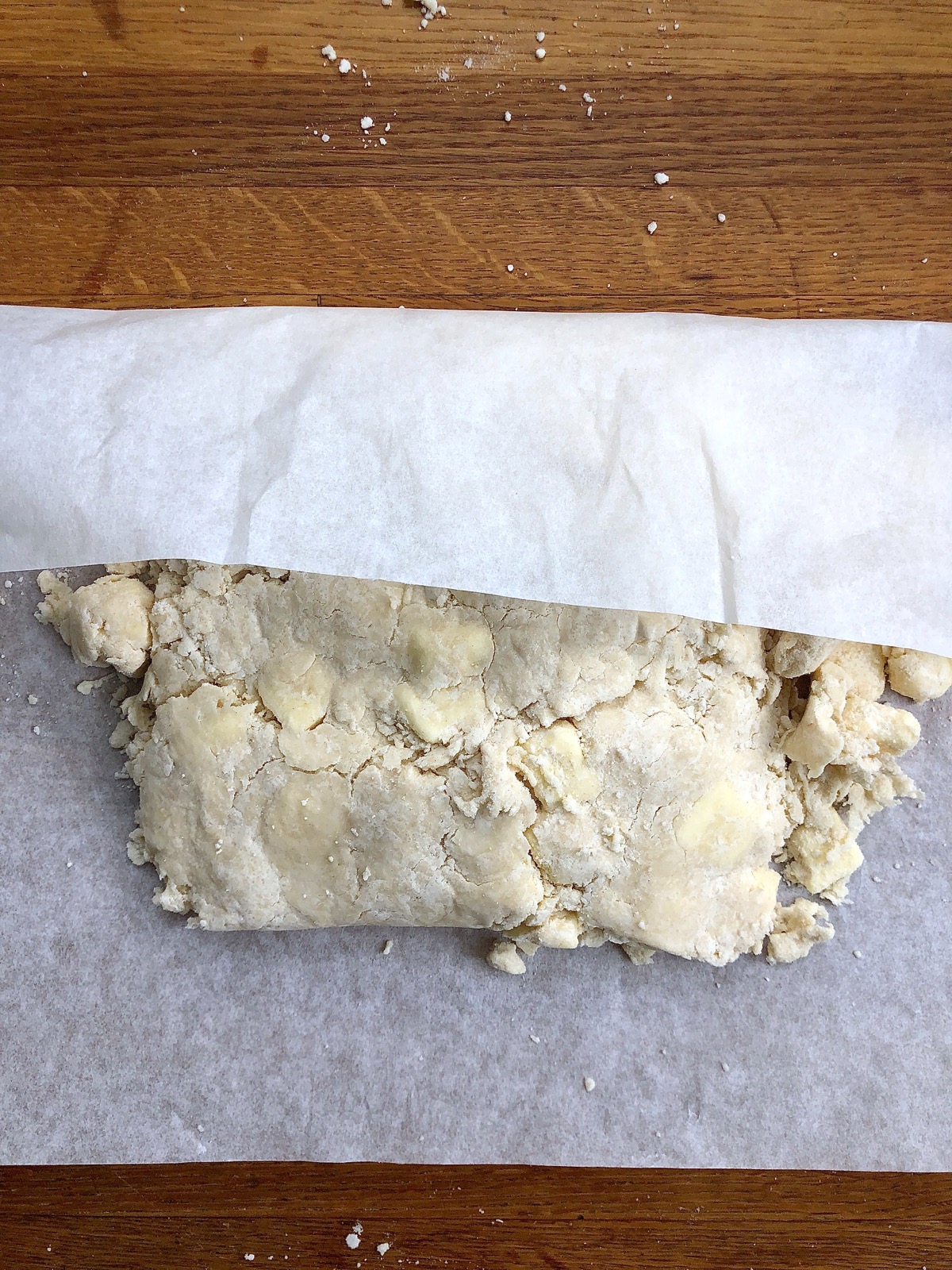
Using the parchment, I fold the dough first like a letter, then turn it 90° and fold it like a letter again.
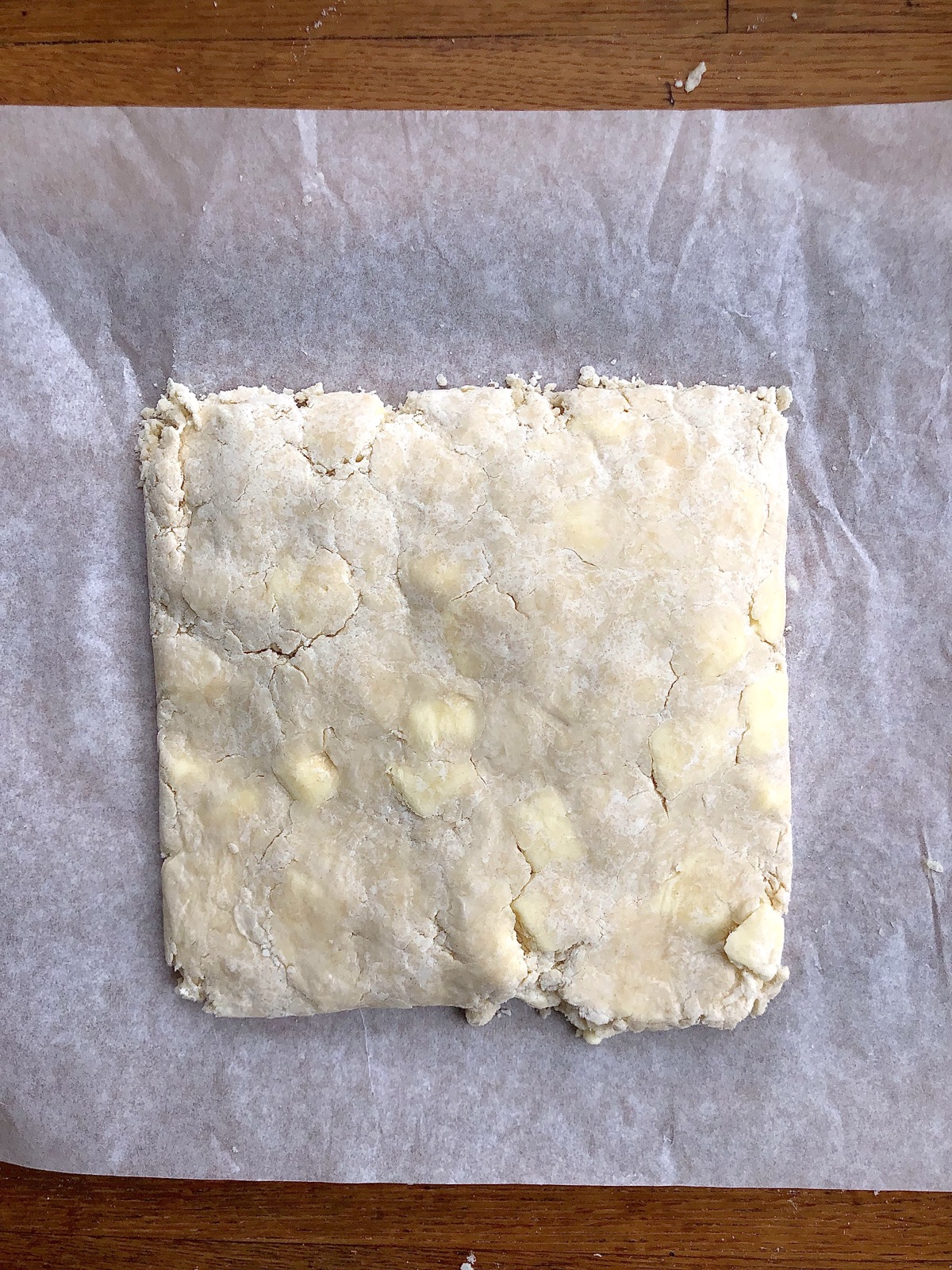
Another turn, another couple of folds, and it’s holding together pretty well.
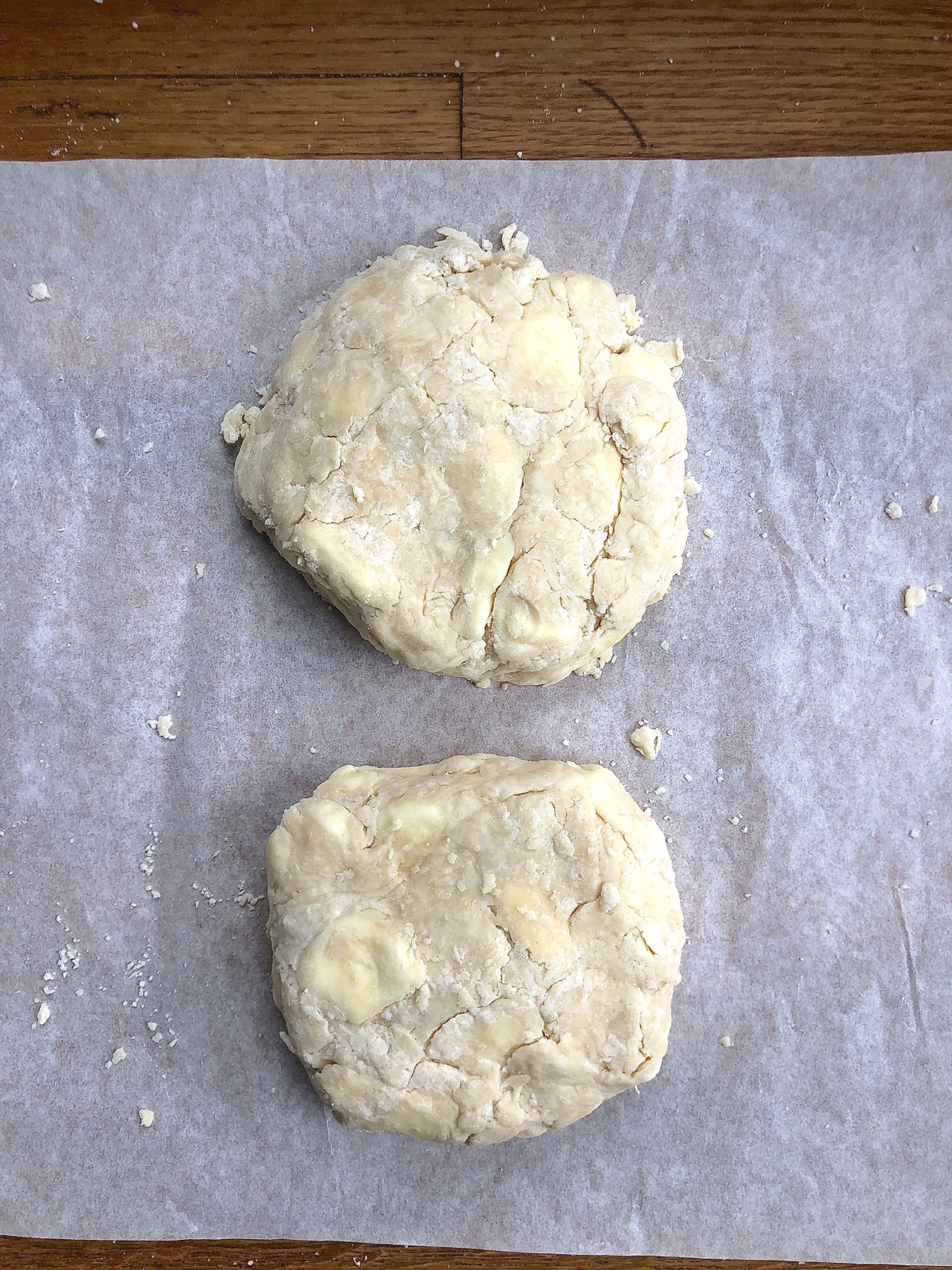
I divide the dough in half, shape each into a vaguely round disc, wrap in plastic, and refrigerate for 30 minutes.
Let’s cut to the end game: pie. It’s fall, so Apple Pie is a must.
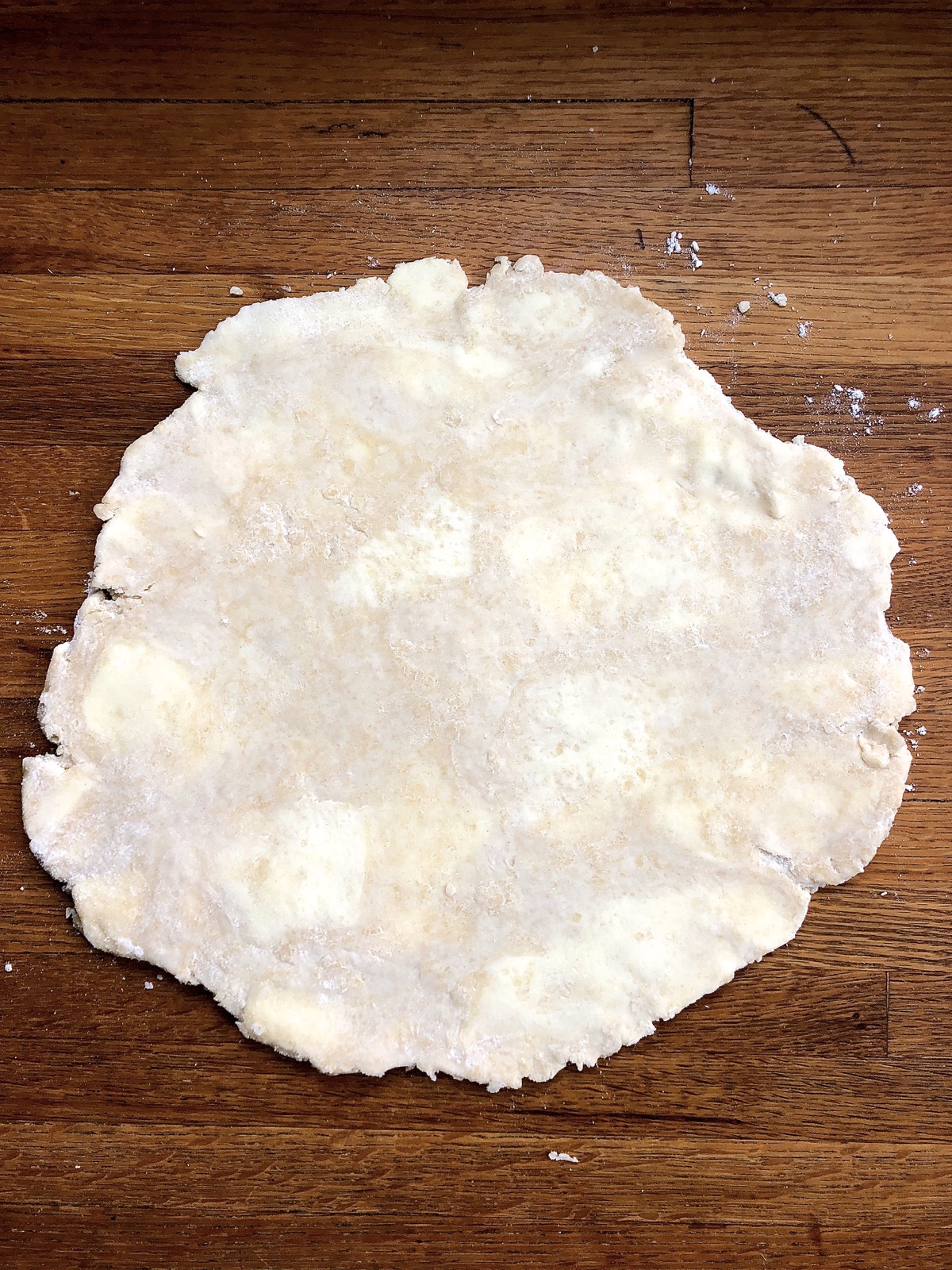
I roll out the bottom crust — see those “sheetlets” of butter?
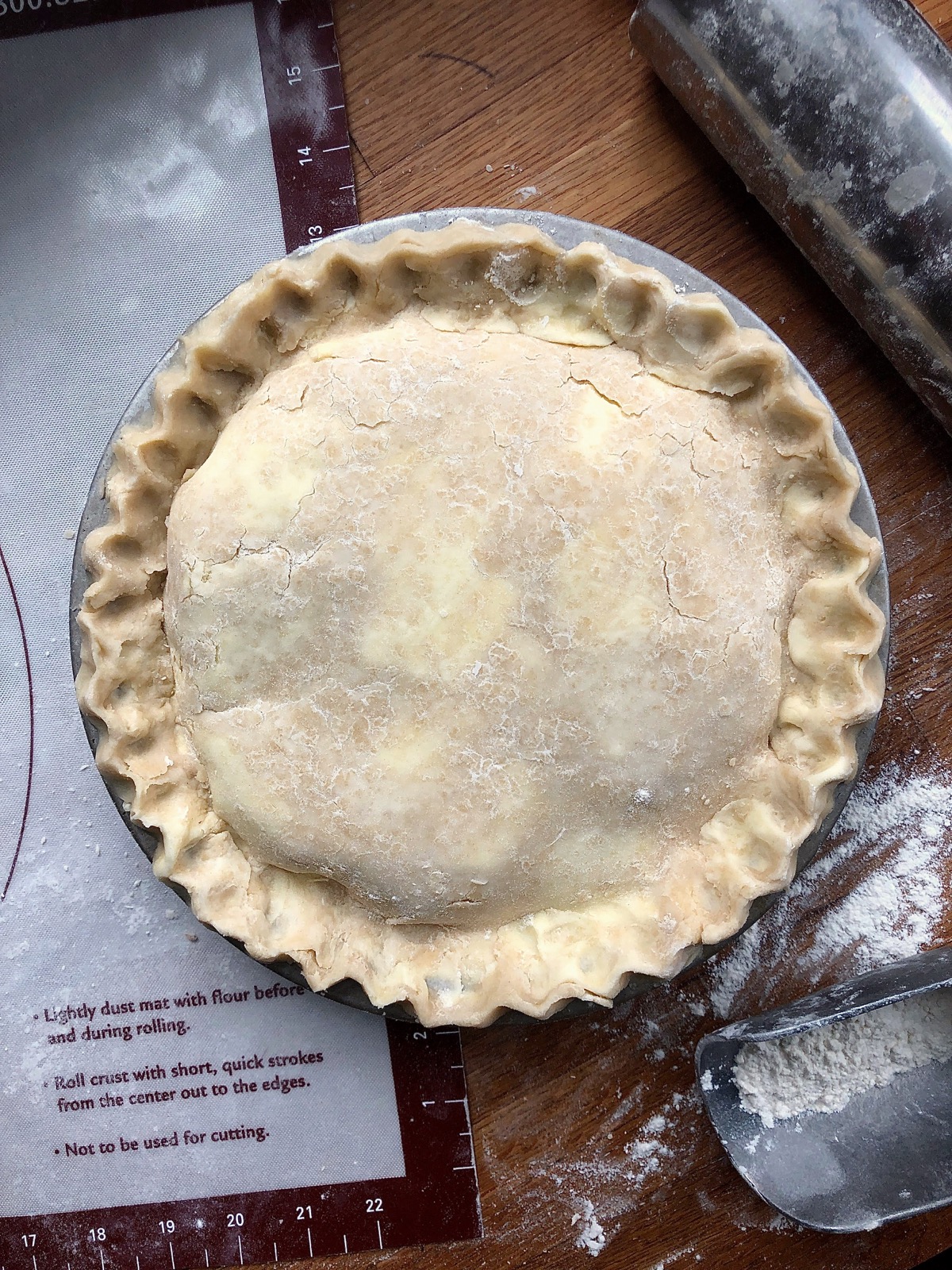
I add the filling and top crust, crimp the two together, and Bob’s your uncle: one apple pie, ready to bake. Almost; I still need to brush it with milk, sprinkle with sparkling sugar, and give it a few vent slashes.
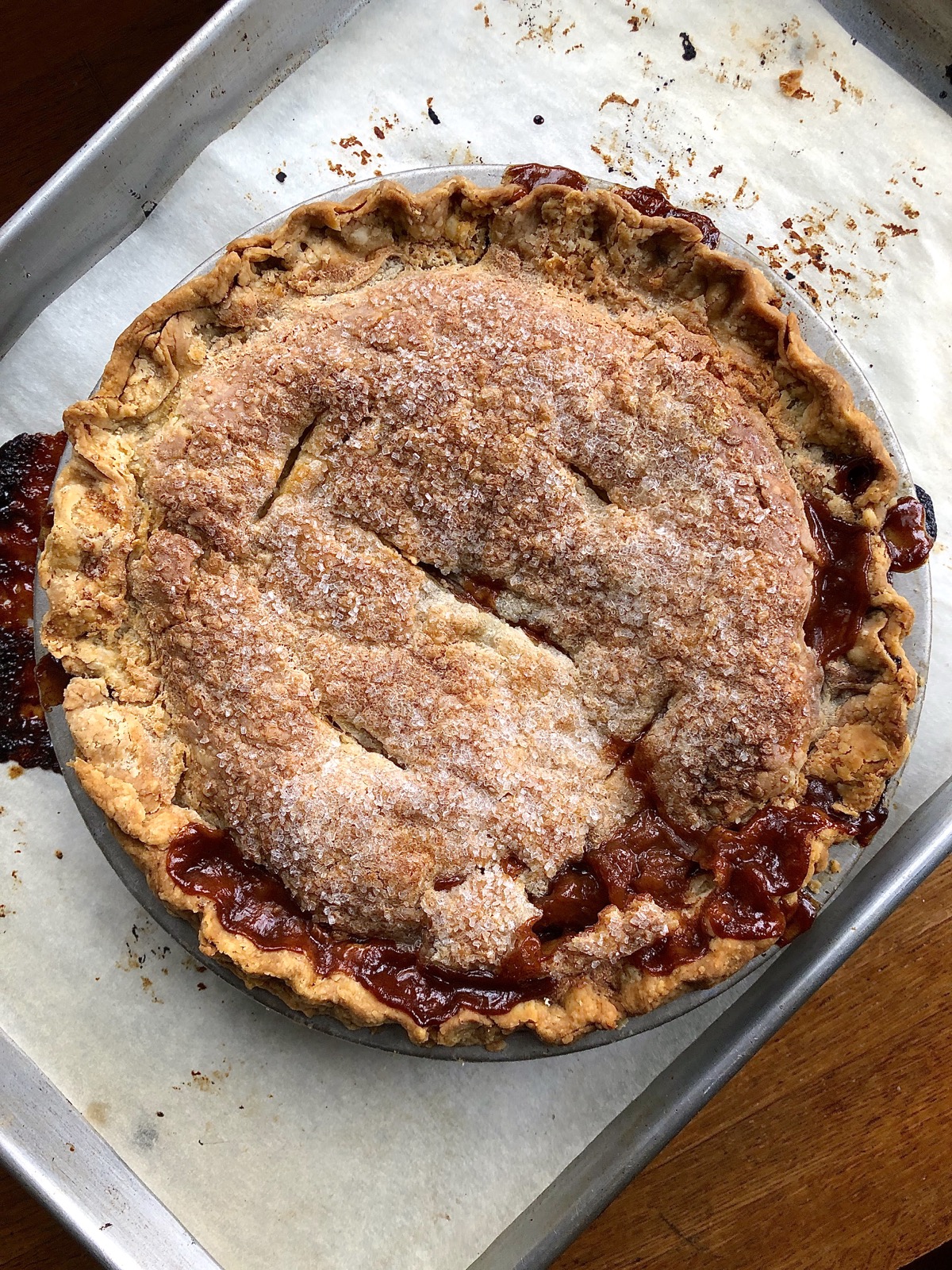
Ninety minutes later: hot apple pie. VERY difficult not to cut a slice immediately, but I wait until it’s completely cool (lest its filling ooze out).
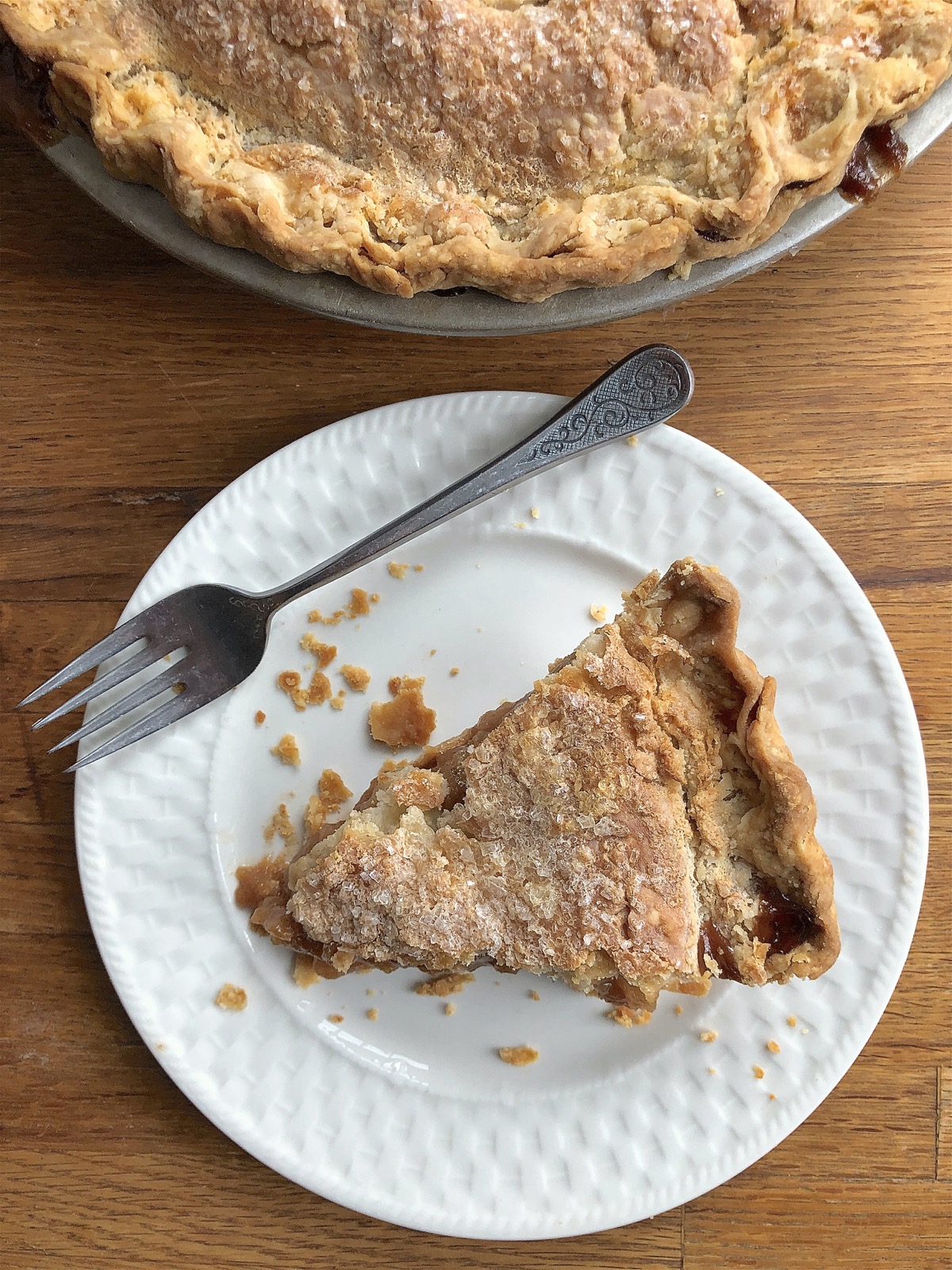
It’s much easier to enjoy the texture of a super-flaky pie with each luscious bite rather than try to show it in a picture. Trust me, this crust is both flaky and layered.
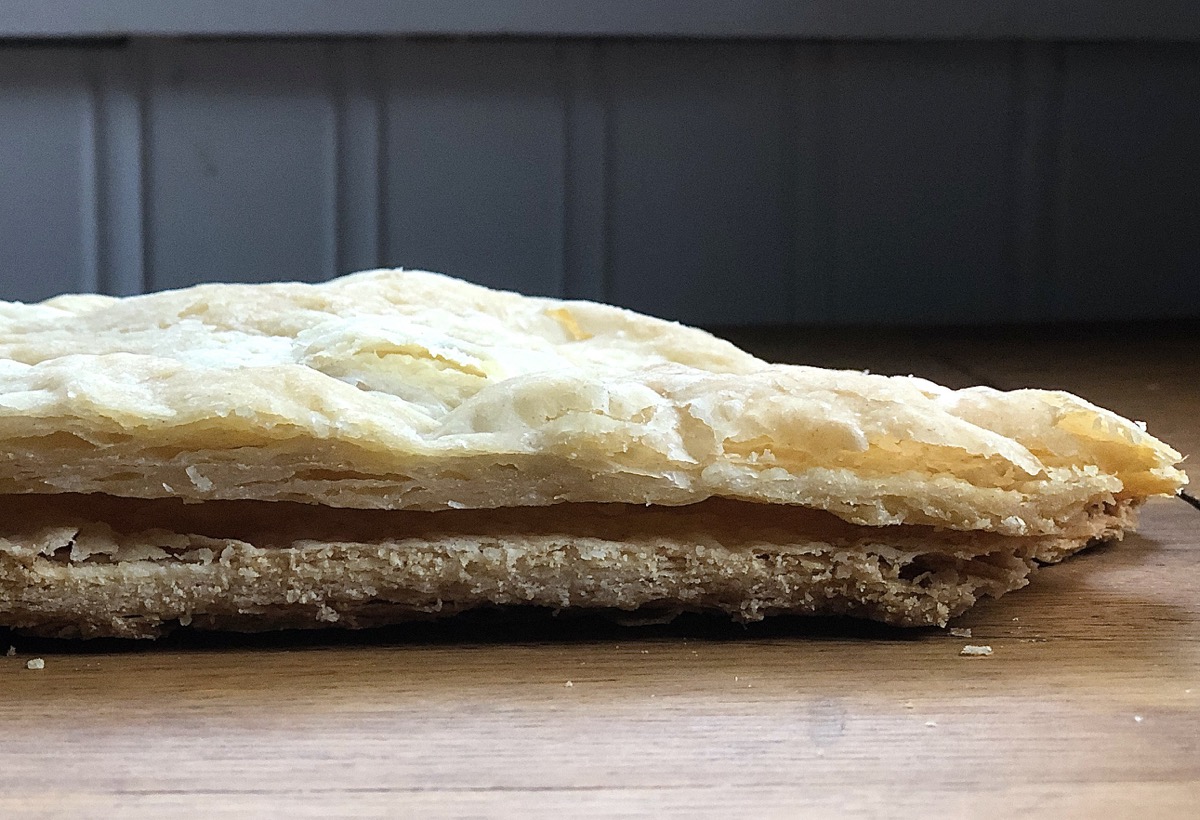
Is toss-and-roll better than my usual “dump and mix” stand mixer crust? Marginally. Would I always use this method of rolling chunks of butter into the flour? No. Call me lazy; when the results are close to even, I’ll trade ease for effort most days.
Still, if I’m ever entering a pie contest — or baking pie for an audience that appreciates the subtle nuances of crust texture — then I’m happy to deal with the extra toil of hand-mixing dough for this super-flaky crust.
Are you endlessly curious about pie — and how to make your best one ever? Find more tips in our Pie Baking Guide.